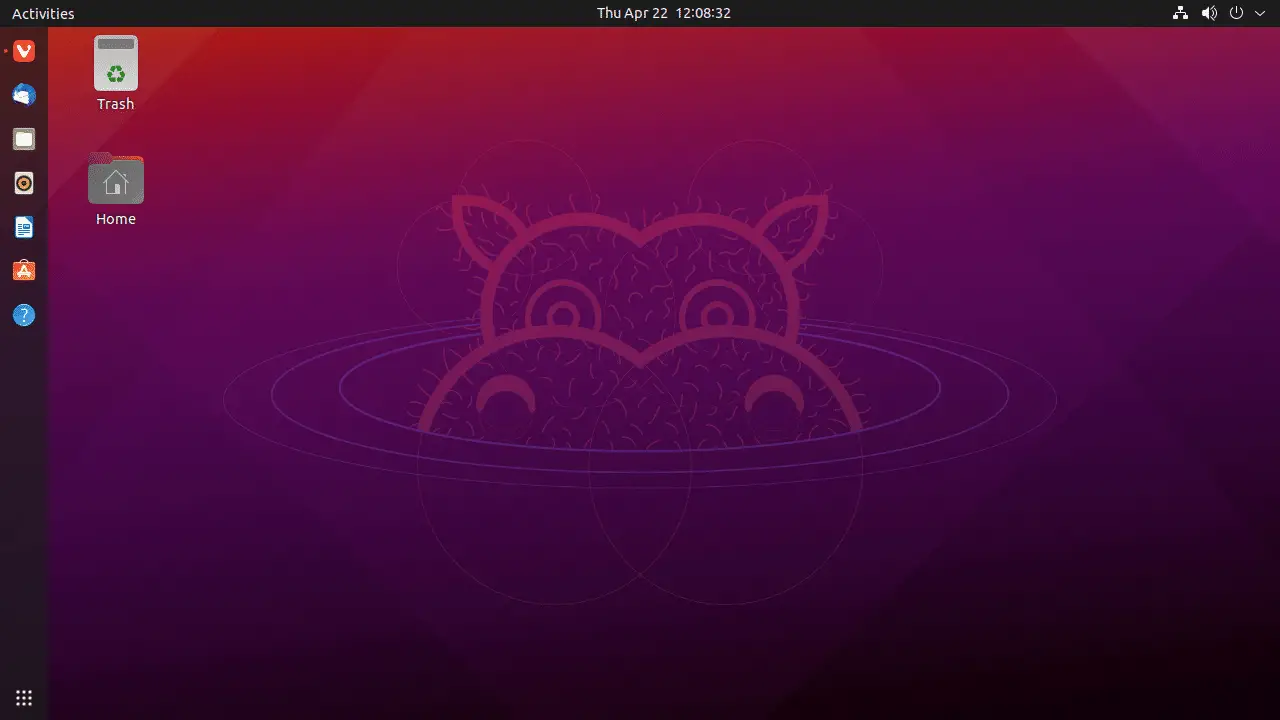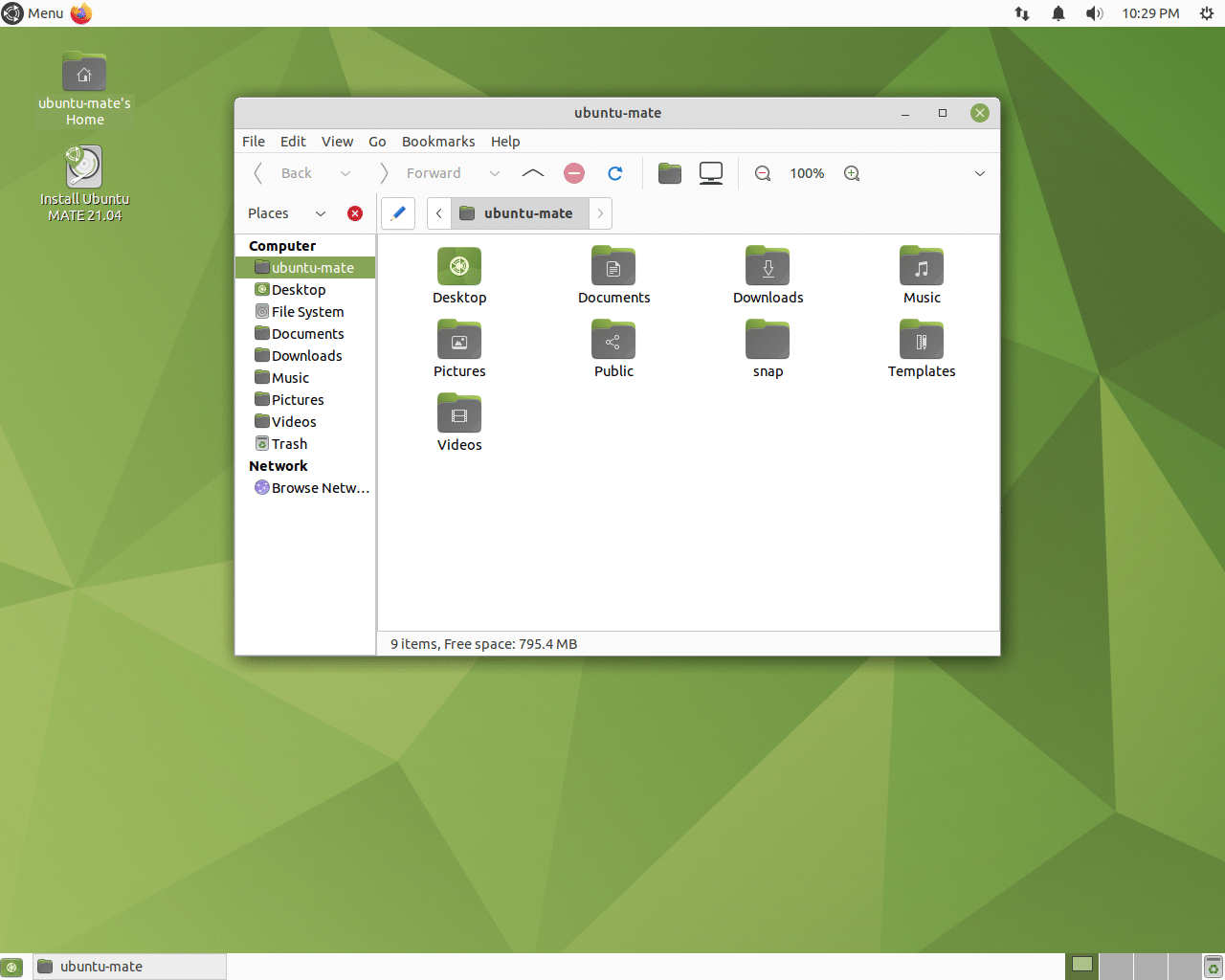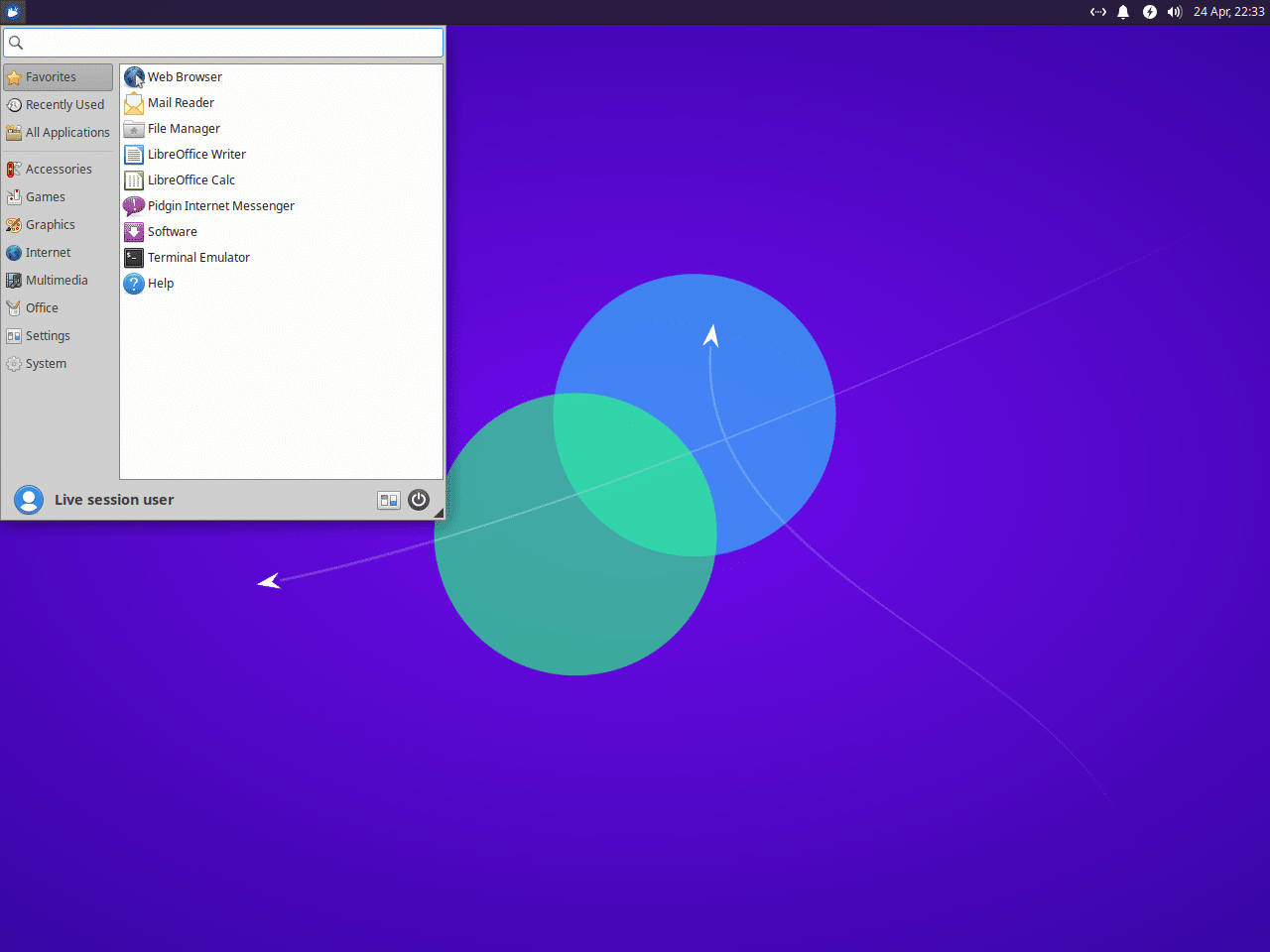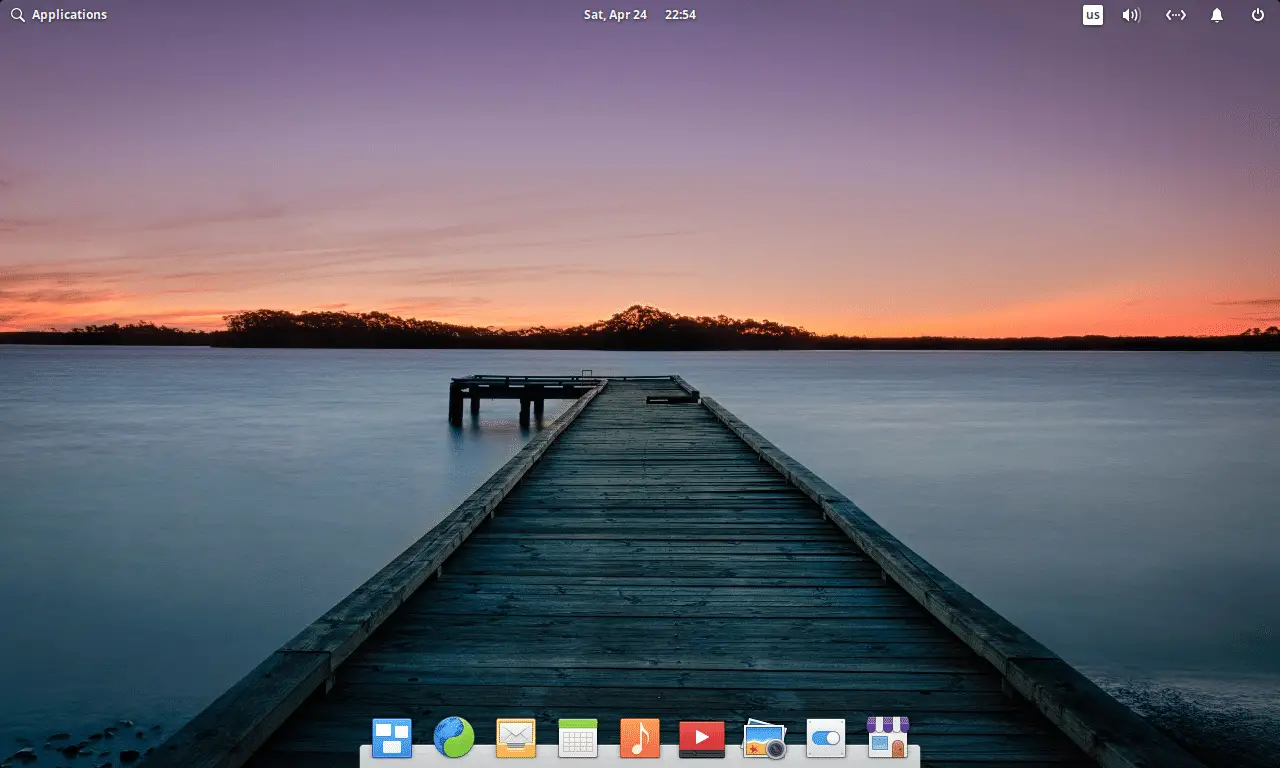8 Best Linux Desktop Environments in 2023
Table of Contents
Linux distributions come in various flavors. No matter if users are joining in from Windows, Mac, or any desktop operating system, Linux desktop environments make the onboarding process a lot easier. In this article, I will list the top 8 desktop environments for Linux that you can use in 2023.
We often see new users asking the purpose of having too many desktop environments for Linux. The answer is simple — more options for users, and every desktop environment has its own advantages. Or, if you are tired of using one, install any other that feels good.
Before we continue, we’d like to tell you about Contabo. We host LinuxAndUbuntu on Contabo VPS. Check them out if you need web hosting. Prices start at $6.99 per month for an 8GB RAM and 4 Core CPU VPS.

The desktop environment is an important part of any Linux distro. It dictates how applications will look & behave on your desktop. Desktop environments have their own set of applications pre-installed on the operating system. So there is always something new and exciting.
Community support
One of the benefits of using any popular application is its great community support. Among thousands of users, you can get answers to your queries pretty quickly. The following Linux desktop environments are prevalent. If you’re new to Linux, jump over to any one of these desktop environments, and it has a huge community to back you up.
Linux Desktop Environment for everyone
When I started to learn Linux, I quit many times. I remember installing Ubuntu several times and uninstalling it within 24-48 hours. As a Windows user, I found the Ubuntu interface quite confusing.
I am thankful to the Linux community that guided me to Linux Mint. The interface of Linux Mint was very much like Windows. The confusion was instantly gone, and I could at least move around the distro and explore everything.
Today I feel, every desktop environment has its own use. If selected the right desktop environment, users can increase their productivity.
Best Desktop Environments for Linux
So without any further adieu, let’s start with the list of top desktop environments for Linux.
1. GNOME
- User-friendly: 8/10
GNOME 3 is one of the biggest open-source projects. It is the continuation of Gnome 2, aka. MATE. GNOME is the default desktop environment on many major Linux distributions such as Ubuntu, Fedora, CentOS, Red Hat Enterprise Linux, OpenSUSE, Zorin OS Core & Ultimate, Debian, Pop!_OS, and the list goes on.

GNOME is a user-friendly distro in the case a user is already familiar with the Linux environment. Although, for new Linux users, the default GNOME interface may be a little bit confusing. Several Linux distributions have crafted GNOME for new Linux users, such as Zorin OS. It is very much like Windows, but it’s GNOME.

GNOME Applications
GNOME core apps include a list of 30+ essential applications. These apps are better integrated into the desktop environment and receive regular updates.

Here are some GNOME apps –
- Boxes – For creating virtual machines
- Cheese – For webcam
- Evince – Document viewer
- Nautilus – File manager
- Eye of GNOME – Image viewer
- Maps
- Weather
- System monitor
Linux distributions to use GNOME as the default desktop environment
As I mentioned above, GNOME is supported and used by major open-source projects. If you want to use GNOME, download and install any one of the following Linux distributions –
| Linux distribution | GNOME version | Latest GNOME |
| Fedora 33 | 3.38.0 | GNOME 40 available in Fedora 34 Beta |
| Ubuntu 21.04 | 3.38.4 | N/A |
| CentOS | 3.32.2 | N/A |
| Red Hat Enterprise Linux | 3.32.2 | N/A |
| Manjaro Linux | 3.38.4 | N/A |
The list of distributions that provide a GNOME flavor is pretty long. If you want to use GNOME, install the GNOME flavor of the above Linux distributions.
Install GNOME on top of other desktop environments
GNOME is available in almost all Linux distros repositories. Installing it on top of any other desktop environment is very simple but not recommended. The distribution is crafted to use the desktop environment that it ships with by default. If a user manually installs another desktop environment, whether GNOME or KDE or any other, it may overwrite configuration files. As a result, several applications may not function or look as expected.
If you still want to install GNOME on the default desktop environment, use the package manager to pull gnome-desktop packages from the distro repository.
For example –
Install GNOME on Kubuntu –
sudo apt install gnome-desktop2. KDE Plasma
- User-friendly: 10/10
The next on our list is one of the most beautiful, feature-rich, and customizable desktop environments for Linux, KDE Plasma. KDE development was started in 1996. Its first version was released in 1998.

Plasma is a very user-friendly Linux desktop environment. If you’re switching from Windows to Linux, KDE Plasma will make the transition smooth and easy.
The desktop environment is extremely customizable. As you get used to it, you’ll learn that you can customize each part of the desktop.
KDE Applications
Every desktop environment has its own set of applications that come pre-installed with it. KDE develops a bundle of applications called KDE Applications listed on apps.kde.org.
The bundle includes applications for almost everything, from development and games categories to graphics and security.
Linux distributions officially ship KDE Plasma
KDE is built using modern technologies such as Qt and is used on numerous distributions as the default desktop environment. Some of the most popular Linux distributions that ship with KDE are Kubuntu, Fedora, KDE Neon, Q4OS, Gentoo Linux, KaOS, and a lot more.
If you want to enjoy the latest plasma desktop, download and install KDE Neon.
Install KDE Plasma
KDE plasma is available in almost all distributions’ repositories. As I mentioned above, installing any desktop environment on top of the other desktop environment is not recommended. To get 100% of KDE Plasma desktop, download and install any Linux distros that ship with it.
Still, if you want to install KDE Plasma manually on your Linux distribution, use the package manager and install it from the repositories.
For example, if you’re using Ubuntu, use apt –
sudo apt install plasma-desktop3. Cinnamon
- User-friendly: 10/10
For a long time, Cinnamon has been the go-to desktop environment for Linux learners. Where GNOME and Unity scared new Linux users a little bit, Cinnamon made the onboarding process easier by providing the easy to grasp desktop experience.

Cinnamon desktop is developed by the Linux Mint, one of the most user-friendly Linux distributions for new users.
GNOME 3 release disappointed many, and the Linux Mint team was one of them. Initially, the Mint team tried to bring back the traditional look of GNOME (GNOME 2) by developing extensions for GNOME shell, but the community didn’t like it. Later, the Mint team forked GNOME 3 and made its own desktop environment called Cinnamon.
Mint team gradually forked GNOME’s components and started developing their own version that does not require GNOME 3. As a result, since October 2013, Cinnamon has been an independent desktop environment.
X-Apps
The team started a new project called X-Apps. The reason behind starting this project is to properly integrate applications from a different desktop environment (such as GNOME applications) to traditional desktop environments such as Cinnamon, MATE, and Xfce.
Head of to this wiki to learn more about this project.
How to use Cinnamon?
Many Linux distributions provide Cinnamon flavor. Here are the few Linux distros that you can download and install to use Cinnamon –
- Linux Mint
- Manjaro Linux
- ArcoLinux
- Debian
- Endeavour OS
- Fedora
- Mageia
4. MATE
- User-friendly: 10/10
MATE is also a result of the disappointment of GNOME 3. As far as I know, when GNOME 3 replaced the GNOME panel with GNOME shell, MATE was the first fork and continuation of GNOME 2. The developers aim to provide the traditional desktop experience with the GNOME panel. MATE is among the best lightweight Linux desktop environments.

Today, Ubuntu MATE is an official Ubuntu flavor that uses MATE.

MATE is a lightweight desktop environment which means we can use it on older computers. Almost all major Linux distributions provide MATE flavor.
MATE Apps
MATE devs have developed applications from scratch for the MATE desktop. But similar to Linux Mint, MATE developers have also forked many GNOME core applications to integrate with MATE properly.

X-Apps, the Linux Mint team started integrating GNOME core apps into Cinnamon, which can also be used on MATE.
How to use MATE Desktop?
Almost all major Linux distributions have a MATE flavor. Just download and install the distro of your choice. Below are some of the distros that officially provide MATE flavor –
- Ubuntu MATE
- Manjaro
- Linux Mint
- Debian
- Fedora
- PCLinuxOS
- Parrot
- Kali Linux
5. Xfce
- User-friendly: 10/10
Xfce is one of the best desktop environments for old computers. It’s simple, lightweight, and fast.

Most Linux distributions built to run on older hardware use Xfce as their default desktop environment. If you’re looking to run Linux on an ancient computer, try Xfce. BTW, it’s just one specialty of Xfce that it can run smoothly on old hardware, but it does not mean it won’t run on modern computers.

Xubuntu is an official Ubuntu flavor that uses Xfce as its default desktop environment.
How to use Xfce?
Download & install any one of the following distros to experience the Xfce desktop environment.
- Xubuntu
- MX Linux
- Linux Mint
- Manjaro
- Fedora
- Debian
- OpenSUSE
- Zorin OS
6. Deepin Desktop Environment (DDE)
- User-friendly: 10/10
Deepin is the Linux distribution based on Debian’s stable branch. Deepin team developed its own desktop environment called Deepin Desktop Environment or DDE for short.

DDE is the most beautiful desktop environment that I have ever used. Built-in Qt, DDE has been widely appreciated and used by the new Linux users. Recently, a community-supported distro called UbuntuDDE was released that also features DDE.
Besides, Deepin and UbuntuDDE, different other popular distros provide DDE flavor.
Deepin Applications
Deepin comes with several applications designed for this beautiful desktop environment. Deepin applications are built via Deepin Tool Kit or DTK. Here you can see the list of Applications.
How to use Deepin Desktop Environment?
The two distributions that are focused on DDE are Deepin and UbuntuDDE. To experience the latest from the DDE team, download and install any one of the two.
Or you can also install any one of the following distro’s DDE flavor –
- Fedora
- EndeavourOS
- ArcoLinux
- Garuda Linux
- ExTix
7. Budgie
- User-friendly: 10/10
Budgie is another beautiful desktop environment built by the Solus project. Solus is an independently developed Linux distribution that uses eopkg package manager.

The desktop environment is built to run on both old and modern hardware using GNOME technologies such as GTK.

Ubuntu Budgie is an official Ubuntu Flavor to use Budgie as its main desktop environment. The v1 of Budgie was released in February 2018. Currently, many major distributions provide Budgie flavor.
How to use Budgie?
To experience the latest Budgie desktop environment, download and install the Solus distro. Or use download any one of the following distro’s Budgie flavor –
- Ubuntu Budgie
- SparkyLinux
- ArchLinux
- Manjaro Linux
- Endeavour OS
8. Pantheon
- User-friendly: 10/10
Pantheon is the best desktop environment if you prefer macOS design or moving to Linux from macOS. Pantheon is developed by the ElementaryOS project, a popular Linux distribution based on Ubuntu’s LTS releases. Like most in this list, Pantheon is built using GNOME technologies.

It has a simple and sleek interface that’s very user-friendly, especially for Mac users.
Pantheon Applications

ElementaryOS team has designed and developed its own applications for the desktop environment. It includes all the basic applications such as Pantheon Greeter, a session manager, Gala window manager, terminal, Switchboard for system settings, and so on.
Distributions that use Pantheon desktop environment
- ElementaryOS
- Fedora
- GeckoLinux
Conclusion
Here I sum up the list of top desktop environments for Linux. Although it’s not the end of the list, I will add more from the suggestions in the comment section below this article.
And it does not matter if you are a newbie or advanced Linux user; you can select a desktop environment that fits your requirements. The bonus point is that there is a huge community to back you up for free.
Also, let me know what’s your favorite desktop environment. I will consider adding your favorite desktop environment to the list. You can also join the LinuxAndUbuntu Discord server and share your views directly with our growing community.
Frequently Asked Questions
What are the best Linux desktop environments?
Ultimately, the best Linux desktop environment for you will depend on your personal preferences and needs. Try a few different ones to see which one you like best.
What is Linux desktop environments?
Is Xfce better than GNOME?
Xfce is a lightweight and fast desktop environment designed to be efficient and customizable. It is particularly well-suited for older or less powerful hardware or users who prefer a more minimalistic desktop environment. Xfce’s modular design allows users to choose which components they want to use and how they want to configure them.
On the other hand, GNOME is a modern and feature-rich desktop environment designed to be user-friendly and intuitive. GNOME is particularly well-suited for touchscreen devices and optimized for large screens and high-resolution displays. It offers many customization options and built-in applications, such as a file manager, a web browser, and an email client.
LinuxAndUbuntu Newsletter
Join the newsletter to receive the latest updates in your inbox.




